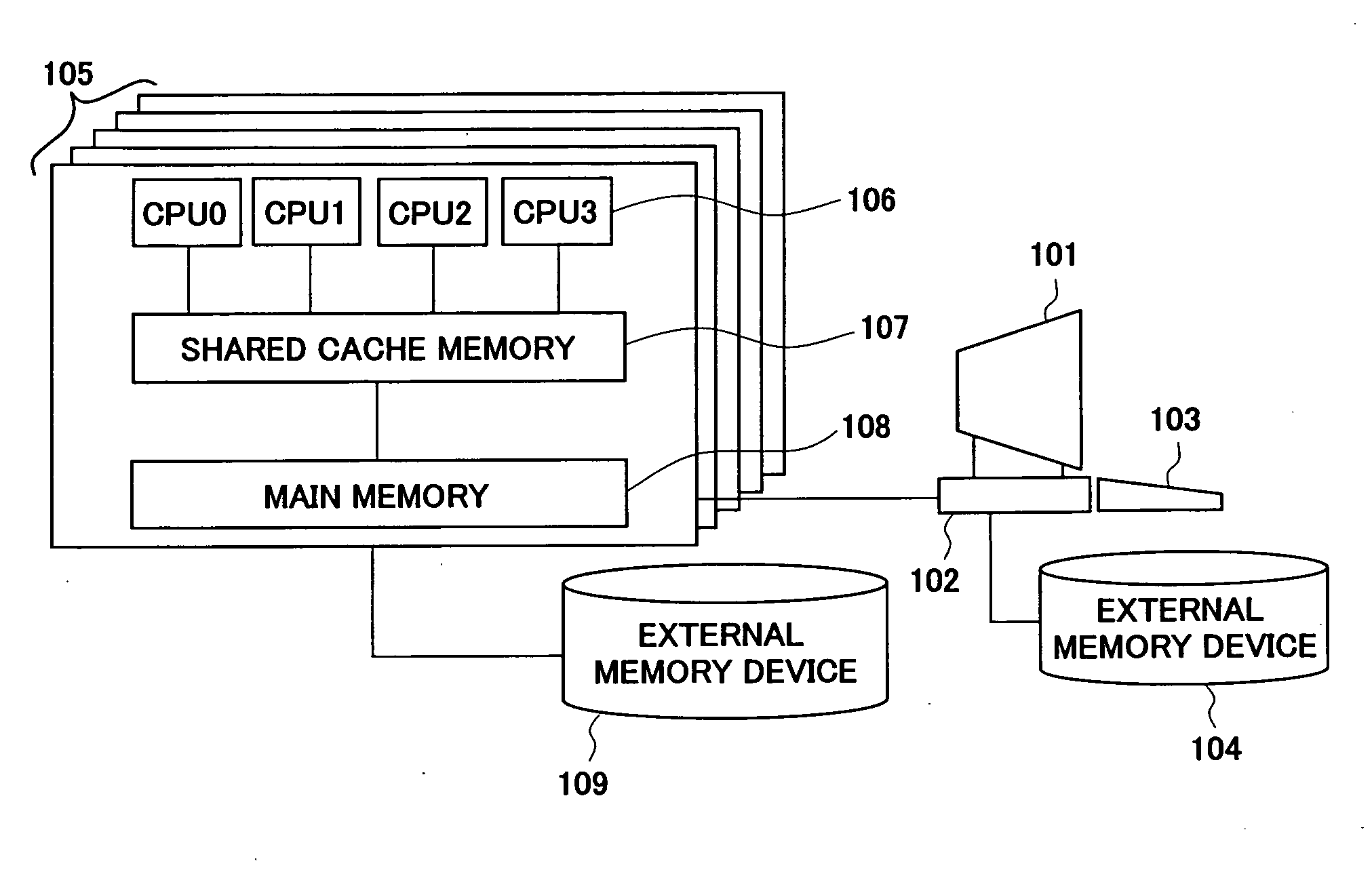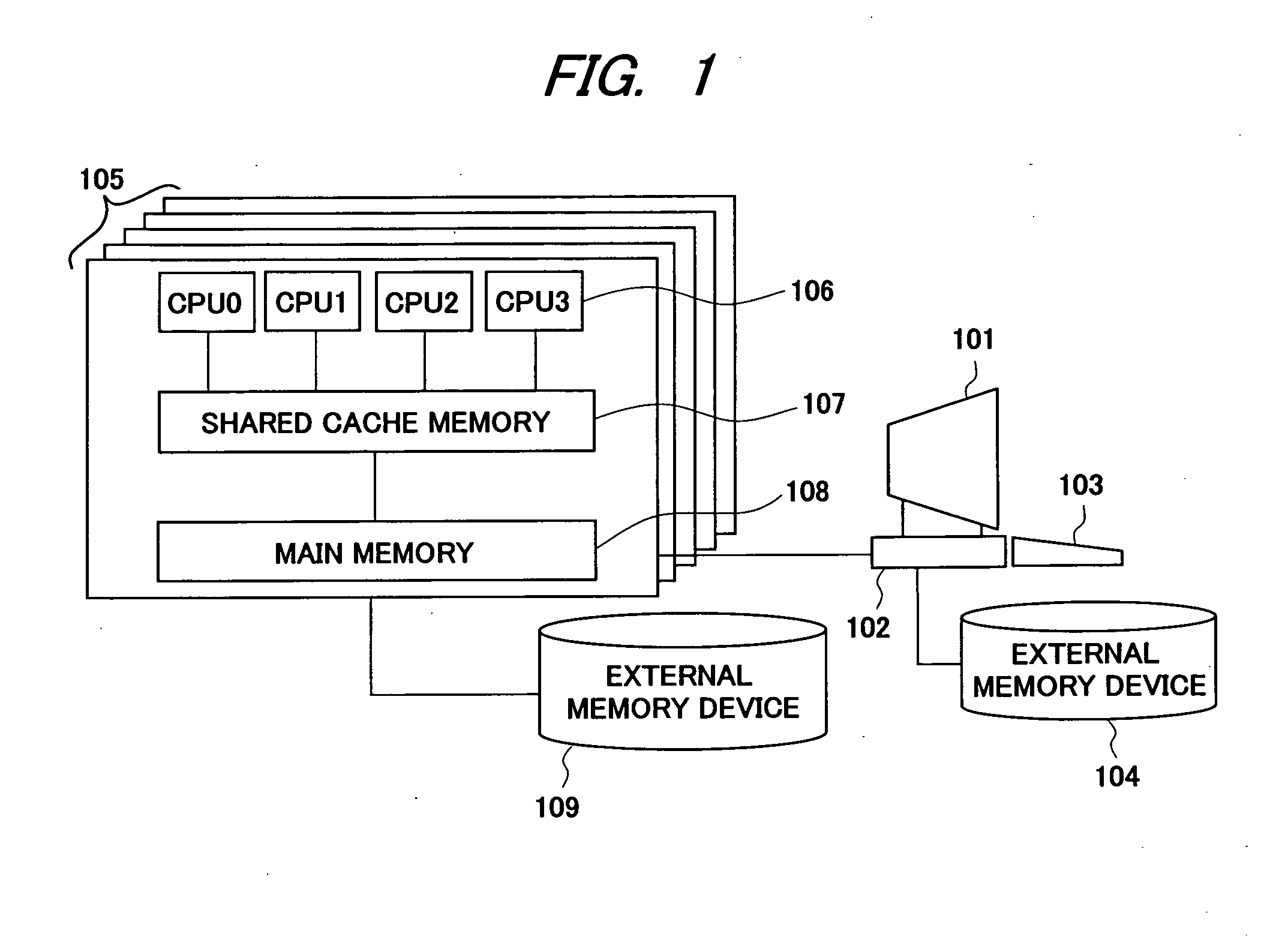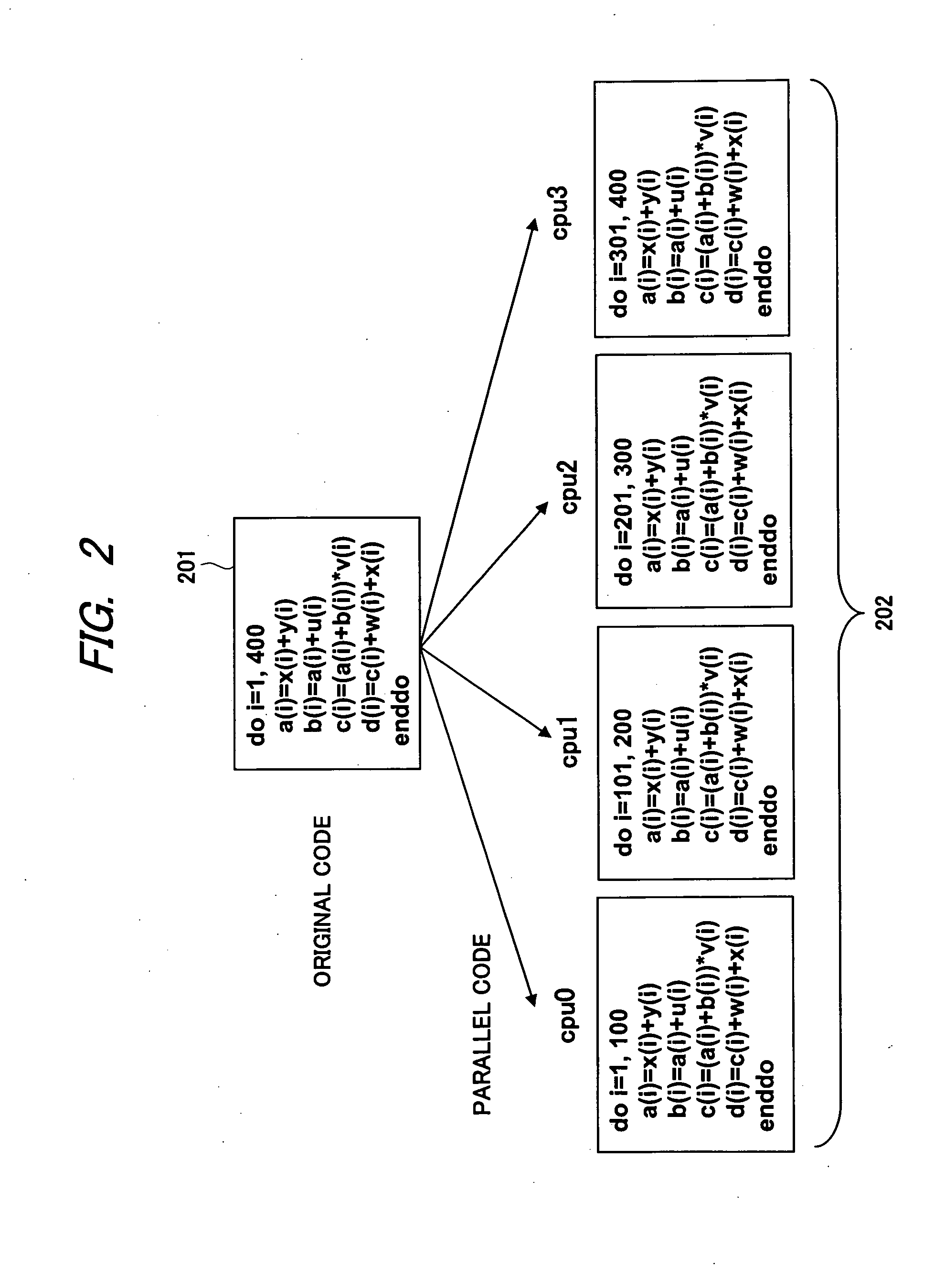Optimum code generation method and compiler device for multiprocessor
a multi-processor and compiler technology, applied in computing, instruments, electric digital data processing, etc., can solve the problems of slow processing of processors, long transfer time from main memory, and inability to achieve the proportional improvement of data supply performance of main memory proportional to the enhanced processing performance of processors
- Summary
- Abstract
- Description
- Claims
- Application Information
AI Technical Summary
Benefits of technology
Problems solved by technology
Method used
Image
Examples
first embodiment
[0046](First Embodiment)
[0047]FIG. 1 is a configuration diagram showing an example of a computer system that executes the control by using the codes generated in a code generation method according to a first embodiment of the present invention. The computer system includes a display unit 101 and a terminal unit 102 for executing the codes, a keyboard 103 to input commands, an external memory device 104 connected to the terminal, a calculation node group 105 for executing the codes, and an external memory device 109 connected to the calculation node group.
[0048]One calculation node comprises plural processors (CPU) 106 that share a main memory device 108 or a cache memory 107, and the calculation node group is configured of one or plural calculation nodes. Commands are inputted from the keyboard 103 and the terminal unit 102, and generated codes are executed by the calculation node group 105. In the present embodiment, the generation method of parallel codes for efficiently operating...
second embodiment
[0107](Second Embodiment)
[0108]In a second embodiment, an example of the code generation method in the case where CPU does not comprise a shared cache in FIG. 1 in the first embodiment mentioned above will be described. FIG. 23 is a configuration diagram showing an example of a computer system that executes the control by using the codes generated in a code generation method according to the second embodiment of the present invention. The computer system in FIG. 23 has a configuration in which the shared cache is removed from the computer system in FIG. 1, and a shared memory 2307 is connected to each processor (CPU) 2306 in a calculation node group 2305.
[0109]Even in the case where no shared cache is disposed among plural processors as shown above, there are two types of parallelization methods similar to the first embodiment. For example, in the case where “calculation” is selected in 606 in FIG. 6, the operation load equalization parallelization method to divide the loop control ...
third embodiment
[0115](Third Embodiment)
[0116]In a third embodiment, an example of the code generation method in the case where the loop control variable of the source code 701 in FIG. 7 in the first embodiment mentioned above is given by a variable instead of a constant will be described. FIG. 26 is a diagram showing an example of a source code to be an evaluation objective in the code generation method in the third embodiment of the present invention. In the source code 2601 shown in FIG. 26, the loop control variable i=1 to 400 that is a constant in the source code 701 in FIG. 7 is given by a variable i=m to n.
[0117]In such a case, in the analysis procedure of dependent process and independent process and the analysis procedure of data reusability in FIG. 12 and the analysis procedures of reusability of the used data in FIG. 16, the data amount is analyzed with using the variable directly. In the example of the reuse data table in FIG. 14 and the example of the main memory data table in FIG. 15,...
PUM
 Login to View More
Login to View More Abstract
Description
Claims
Application Information
 Login to View More
Login to View More - R&D
- Intellectual Property
- Life Sciences
- Materials
- Tech Scout
- Unparalleled Data Quality
- Higher Quality Content
- 60% Fewer Hallucinations
Browse by: Latest US Patents, China's latest patents, Technical Efficacy Thesaurus, Application Domain, Technology Topic, Popular Technical Reports.
© 2025 PatSnap. All rights reserved.Legal|Privacy policy|Modern Slavery Act Transparency Statement|Sitemap|About US| Contact US: help@patsnap.com



